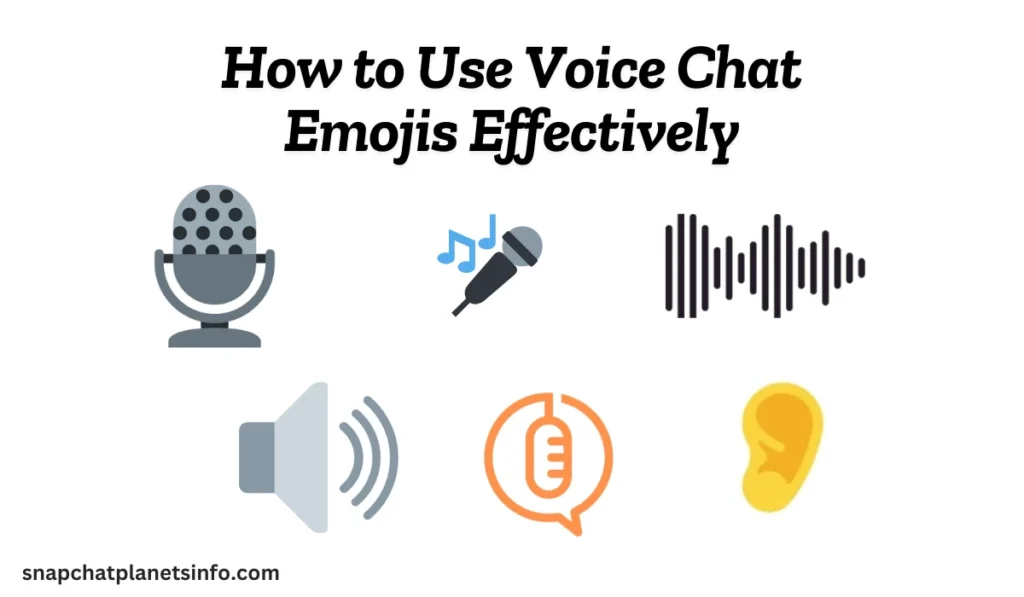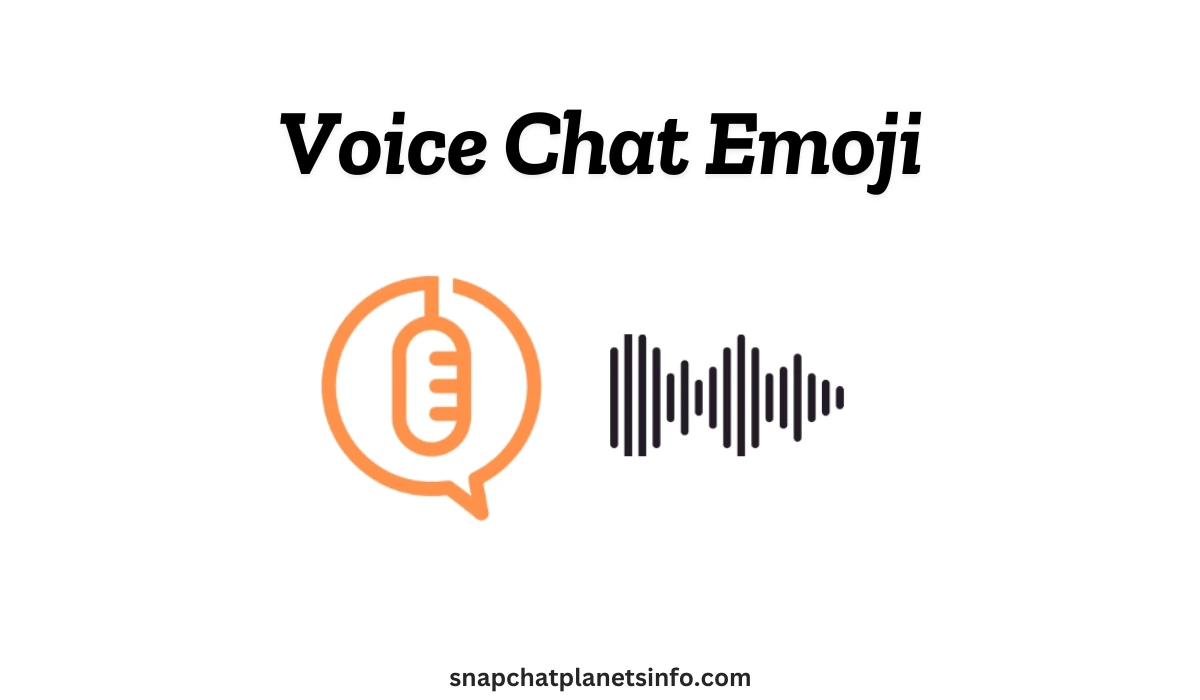In the modern era, communication has evolved significantly, with emojis playing a crucial role in digital conversations. Among these, the Voice Chat Emoji has gained popularity as a representation of real-time voice communication. Whether used in messaging apps, social media platforms, or gaming communities, this emoji helps users convey the idea of voice interaction instantly. Understanding its significance, usage, and variations across different platforms can enhance digital communication experiences.
What is a Voice Chat Emoji?
A voice chat emoji is an icon that symbolizes voice-based communication. It often appears in the form of a microphone (🎤), a speaker (🔊), a headset (🎧), or a speech bubble (💬). These emojis indicate live voice chats, voice recordings, or voice calls in various digital platforms. With the increasing demand for voice-based interactions, these symbols have become a key part of text conversations.
Origin and Evolution of Voice Chat Emojis
The concept of emojis originated in Japan in the late 1990s to add expressions to text-based communication. As technology advanced, the need for voice-related emojis grew. The microphone emoji (🎤) was introduced in Unicode 6.0 in 2010, marking the beginning of voice communication symbols. Over the years, more emojis representing voice interactions have been added, reflecting the increasing use of voice messaging and calls.
Popular Platforms That Use Voice Chat Emojis
1. Messaging Apps
Apps like WhatsApp, Telegram, and Facebook Messenger integrate voice chat emojis to indicate audio messages or calls. Telegram, for example, uses encrypted voice calls, where emojis appear as security verification symbols.
2. Social Media
Platforms such as Discord, Twitter, and Instagram utilize voice chats for denoting live conversations, audio tweets, or voice note features. Discord displays a voice chat icon next to users who are in a live conversation within a channel.
3. Gaming Platforms
Online gaming communities like Xbox Live, PlayStation Network, and Twitch heavily rely on voice communication. The voice chat represents voice channels, team communication, or game commentary in these platforms.
How to Use Voice Chat Emojis Effectively

Using a voice chat emoji appropriately enhances conversations. Here’s how to integrate them efficiently:
- Indicating a Voice Message: When sending a voice note, adding a 🎤 emoji clarifies that the message is audio-based.
- Requesting a Call: In chats, using 📞 or 🎙️ suggests an invitation for a voice conversation.
- Highlighting Live Audio: While hosting an audio space or live podcast, adding 🔊 ensures the audience recognizes the ongoing voice interaction.
- Avoiding Overuse: Although emojis make texts engaging, excessive use may dilute the message’s meaning and create confusion.
Read more: Stip chat
Differences in Voice Chat Emojis Across Devices
| Platform | Voice Chat Emoji Representation |
|---|---|
| 🎤 for voice messages, 📞 for calls | |
| Telegram | 🔊 for live voice chats, 🎙️ for podcasting |
| Discord | 🎧 for active voice users, 🔊 for channels |
| Twitter Spaces | 🎙️ for audio conversations |
| 📞 for voice calls, 🎤 for stories |
Why Are Voice Chat Emojis Important?
The voice chat emoji serves multiple purposes:
- Enhances Digital Conversations: It bridges the gap between text and voice communication.
- Clarifies Intent: Using the correct emoji helps users understand when a conversation involves audio interaction.
- Supports Accessibility: Some people prefer audio over text, and these emojis make voice-based communication more inclusive.
- Improves Engagement: Emojis make messages visually appealing and encourage users to interact more actively.
Role of Voice Chat Emoji in Online Gaming
Voice communication is essential in online gaming, enabling players to coordinate strategies. The voice chat represents the availability of voice channels in multiplayer games. Platforms like Discord and PlayStation Network use 🎧 and 🎙️ to show active voice communication. Gamers rely on these emojis to identify teammates engaged in discussions. As eSports grows, the importance of voice chat icons in gaming increases.
Voice Chat Emoji in Professional Communication
While voice chat emojis are widely used in informal settings, they are also making their way into professional communication. Virtual meetings on platforms like Zoom and Microsoft Teams use 🎤 and 🔊 to signify speaking turns. Many professionals use these emojis in emails or chat messages to indicate an upcoming call. However, their use should remain contextually appropriate to maintain a formal tone.
Psychological Impact of Voice Chat Emojis
Emojis play a significant role in how people interpret digital conversations. A voice chat can convey warmth and engagement, making interactions feel more personal. Studies suggest that emojis help reduce misunderstandings in text-based communication. When used correctly, they create a friendlier and more approachable conversation tone, even in professional settings.
How Different Cultures Perceive Voice Chat Emojis
Cultural differences affect how emojis are interpreted. In Western cultures, 🎤 is often associated with public speaking or singing, while in Asian cultures, it may symbolize podcasting or online streaming. The 📞 emoji is widely recognized as a phone call symbol, but in some regions, it represents emergency contact or support services. Understanding these cultural nuances ensures effective communication across different demographics.
Read more: Galactic disc fortnite png
Future of Voice Chat Emojis
As digital platforms evolve, voice chat emojis are likely to undergo modifications. Future enhancements may include animated voice emojis or customizable icons that reflect various emotions associated with voice interactions. Additionally, AI-driven platforms may integrate context-based emojis that change dynamically based on the conversation’s tone and intent.
Frequently Asked Questions
What does the microphone emoji (🎤) mean?
The microphone emoji represents singing, voice recording, or live audio conversations.
How does Telegram use voice chat emojis?
Telegram displays emojis in encrypted voice calls to confirm security. If both users see the same emoji, the connection is secure.
Can chat emojis be used professionally?
Yes, but they should be used sparingly in formal communication to maintain professionalism.
Do chat emojis look the same on all devices?
No, emoji designs vary across devices, affecting their visual representation.
Conclusion
The voice chat emoji has become an integral part of modern digital communication. Whether used in messaging apps, gaming, or social media, it effectively represents voice-based interactions. Understanding its evolution, significance, and proper usage can enhance online conversations, making them more engaging and expressive.
As technology advances, we can expect more interactive and dynamic voice chat emojis to emerge, further transforming how we communicate digitally.
